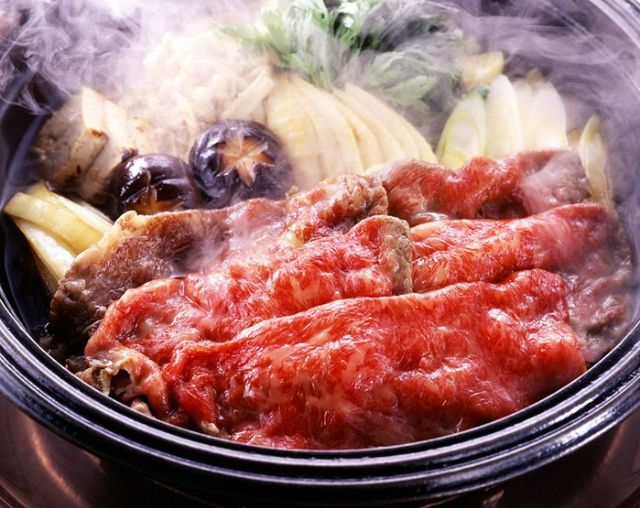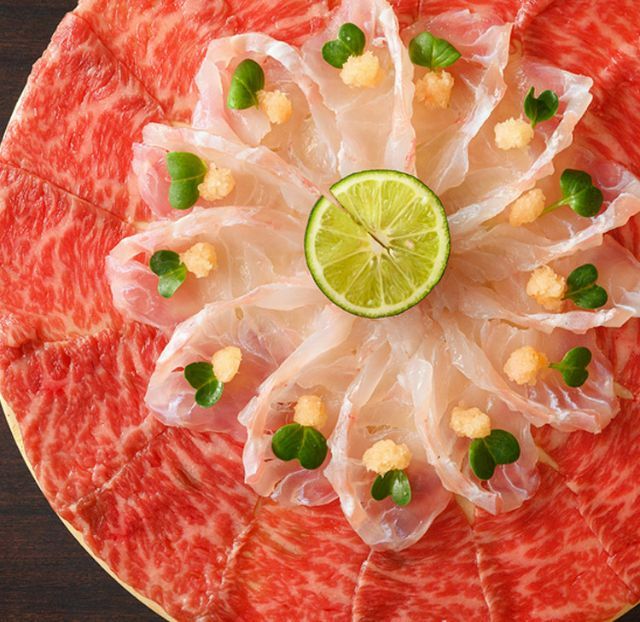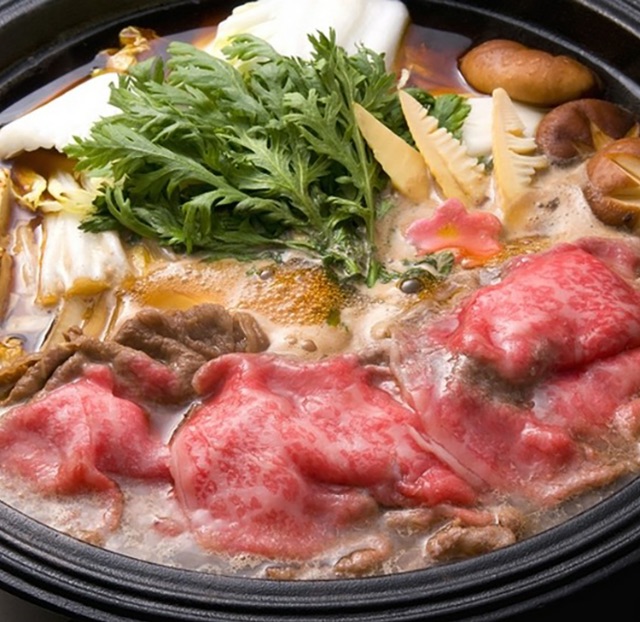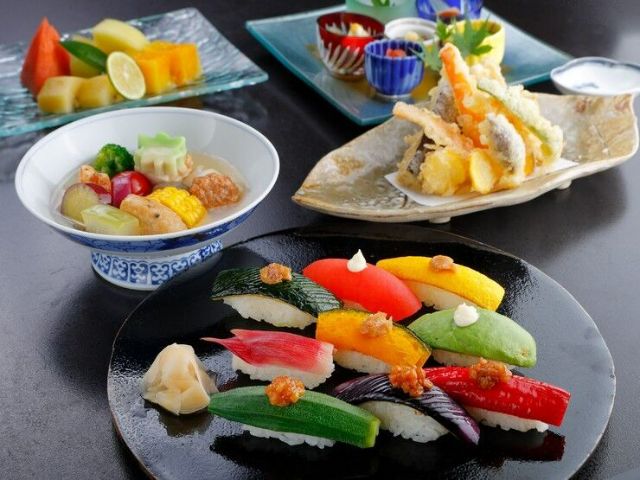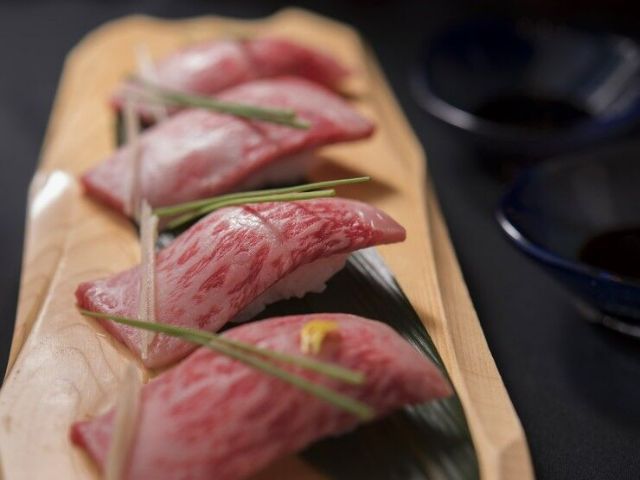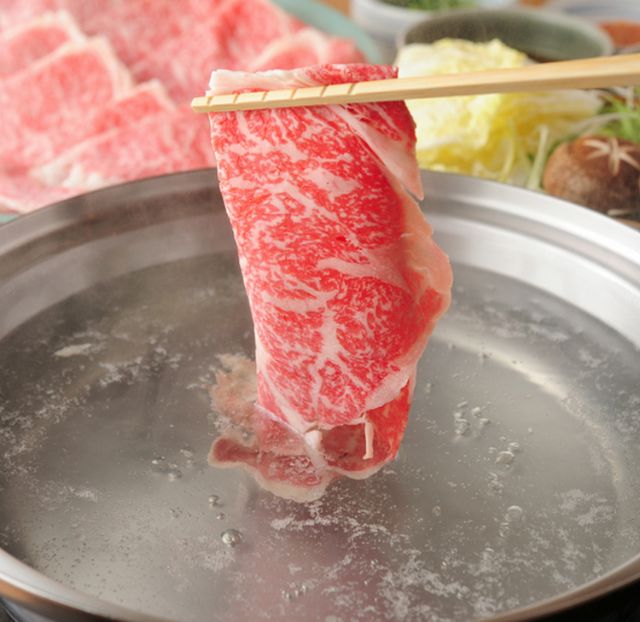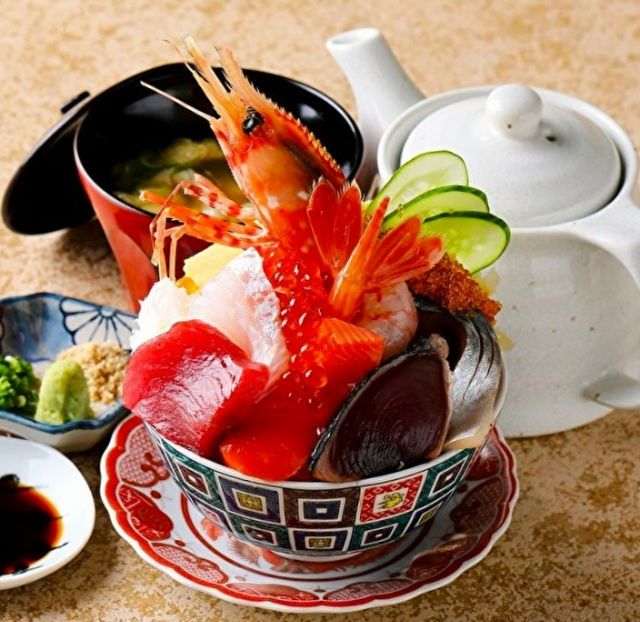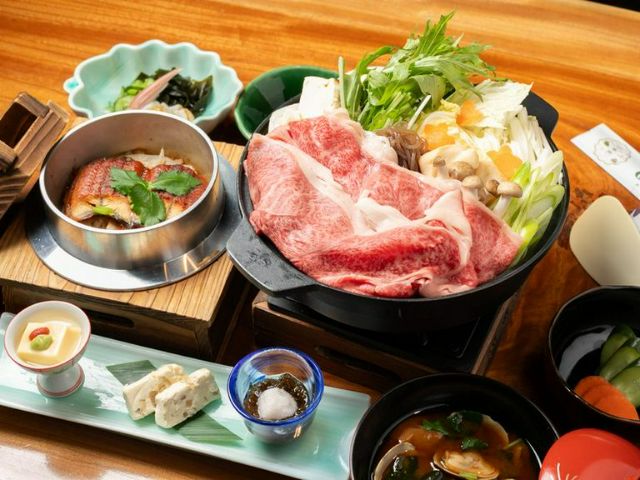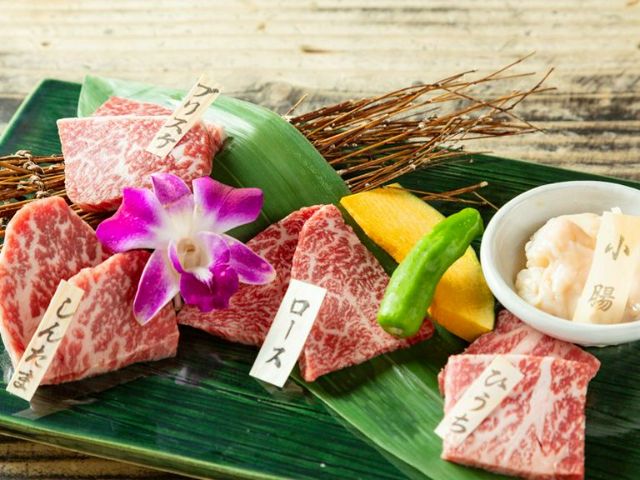Simmered in Kanto, Grilled in Kansai! The Different Styles of Sukiyaki in Japan
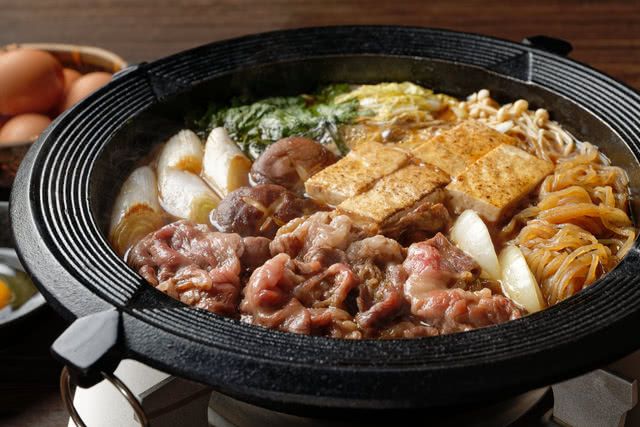
What Is Sukiyaki?
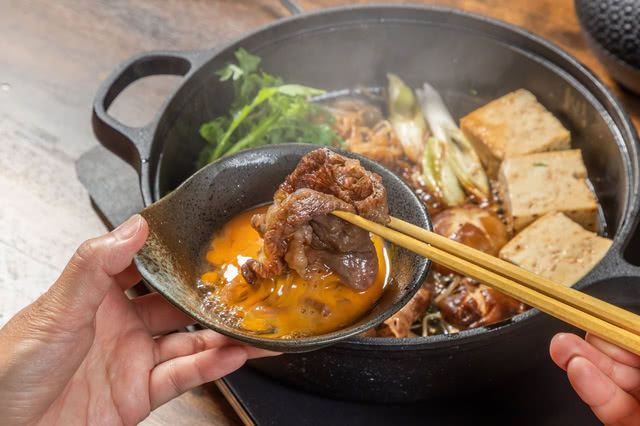
The cooked meat is wonderful on its own but can also be dipped in a small bowl of whisked raw egg, creating a mellow, creamy taste as the yolk clings to the hot meat.
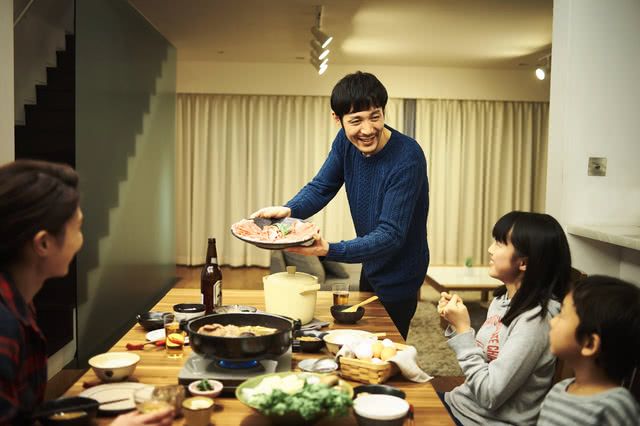
The song Ue o Muite Aruko by Kyu Sakamoto, which reached the top of the US Billboard Hot 100, was released overseas with the title Sukiyaki to reflect its Japanese origin, showing that the dish had even become familiar to Americans as well.
The History of Sukiyaki
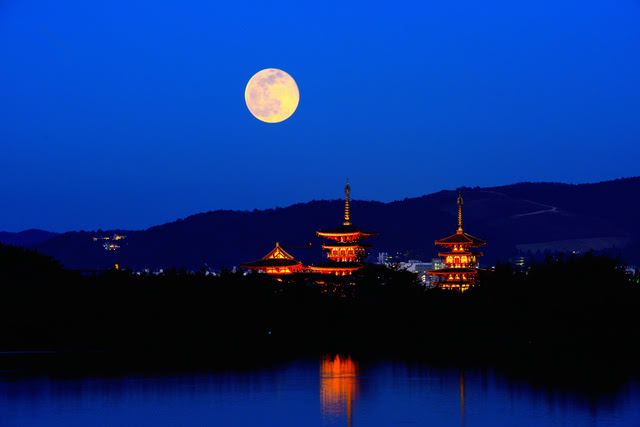
Although sukiyaki is one of Japan's most iconic dishes, the Japanese did not regularly eat meat until the latter half of the 19th century. Due to the strong influences of Buddhism, Emperor Tenmu ordered a ban on meat in 675, and for 1,200 years until the late 1800s, the Japanese avoided eating meat, at least publicly.
This changed as the shogunate's 200-year policy of isolation (limiting exchange and trade with other countries) ended in the mid-19th century. Areas began to be inhabited by foreigners, and the demand for meat increased, which suppliers met by opening gyunabe (beef pot) restaurants that served beef cooked Japanese style.
Unlike the sukiyaki of today, gyunabe was flavored with miso. This is because the beef that was available was tough and had a strong odor, so miso was used to soften it out. Over the years, the quality of beef improved, and soy sauce and sugar replaced miso. By 1877, there were more than 550 gyunabe restaurants in Tokyo.
Image: Yakushi-ji, a World Heritage Site built by order of Emperor Tenmu in 680.
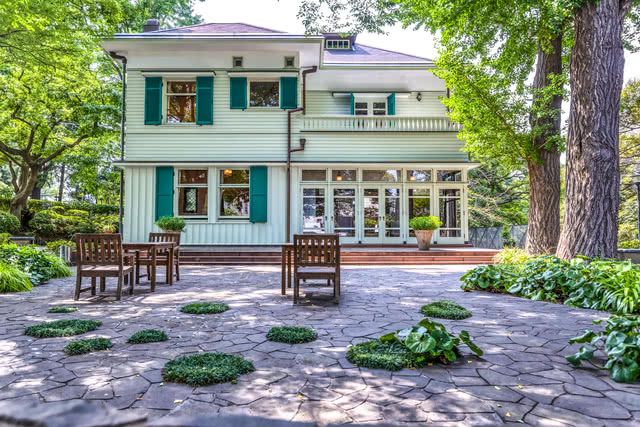
As gyunabe grew popular in Tokyo, sukiyaki became a staple dish in the Kansai area of Japan, centered around Osaka and Kyoto. Sukiyaki at the time was prepared by grilling beef in a flat pot, eating it, and then cooking vegetables in the leftover beef fat, making it very different from today's sukiyaki, where meat and vegetables are cooked together.
Modern sukiyaki became popular after the Great Kanto Earthquake of 1923. Gyunabe restaurants in Tokyo and across the greater Kanto region were badly damaged, so sukiyaki restaurants from Kansai began expanding into Tokyo and serving Kanto-style sukiyaki, which combined the Kansai method of grilling the meat with Kanto’s warishita (sukiyaki broth) flavoring.
Image: The Ehrismann Residence, a reproduction of a western-style house built in Yokohama, Kanagawa Prefecture, which was a foreign settlement district.
How Sukiyaki Is Prepared Today in Kansai and Kanto
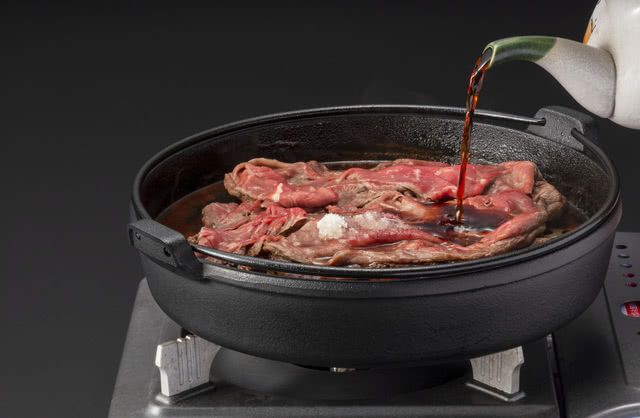
Kansai-style sukiyaki sees the meat grilled in a pot and flavored with sugar and soy sauce to be eaten first. Vegetables and other ingredients are then added to the pot and cooked in soy sauce, sugar, and sake. While the sauce is simmering, more meat is added while the water from the vegetables mellows out the flavor.
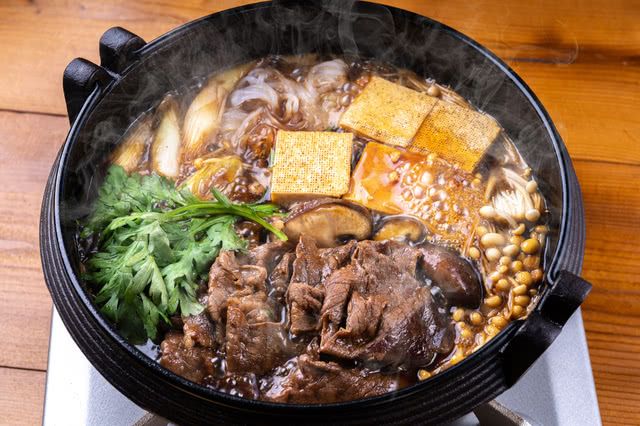
Compared to Kansai-style sukiyaki, where the meat is enjoyed separately from the vegetables, Kanto-style sukiyaki spreads the umami flavors of the meat and vegetables evenly throughout the dish.
So, be sure to try both Kanto and Kansai sukiyaki and see which you prefer!
Recommended Restaurants to Enjoy Sukiyaki
Sukiyaki Jyuniten (Tokyo)
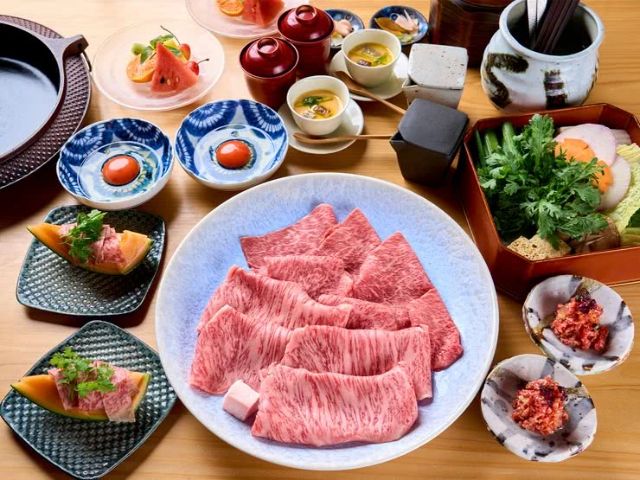
Sukiyaki Jyuniten prides itself on top-quality wagyu beef chosen by professionals. The best beef is procured from across the entirety of Japan, regardless of brand name or where it was raised.
There are several courses for different cuts, such as red meat, marbled meat, or chateaubriand, but if you want to indulge in top-notch wagyu beef, the [(Dinner) Sukiyaki Course Japanese Black Wagyu (Meat) OMAKASE] (22,000 JPY) is recommended. The course includes sukiyaki made with the highest-grade A5 Japanese black wagyu beef, as well as sashimi of carefully selected wagyu beef cuts, letting you relish an array of fantastic flavors that instantly melt in your mouth.
The sukiyaki is cooked Kansai-style with granulated sugar (which has a mellower flavor) and soy sauce. The dish is prepared in a spectacular performance right in front of your eyes, cooking the meat to perfection, and made even more delicious by Kyoto's brand-name Noko egg.
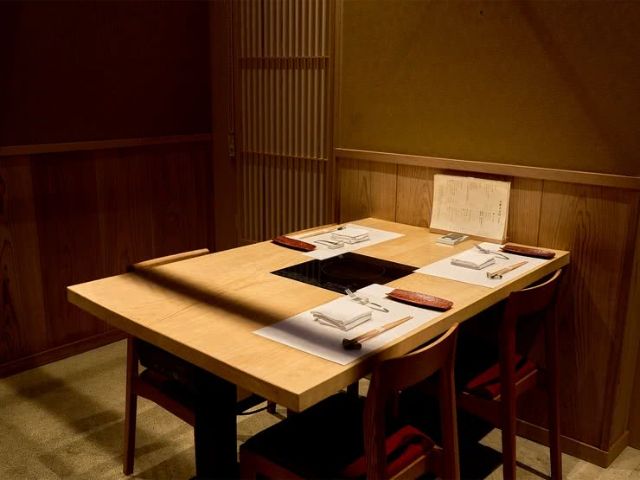
There are four private rooms of varying sizes that can be booked for between 1,100 JPY and 5,500 JPY, depending on the room size and number of people.
Sukiyaki Jyuniten
Closed: Irregular
Average price: [Dinner] 15,000 JPY / [Lunch] 2,000 JPY
Access: 5-minute walk from Marunouchi South Exit of Tokyo Station / 5-minute walk from International Forum Exit of Yurakucho Station / 3-minute walk from Exit 3 of Nijubashimae Station
Address: 3F, Brick Square, 2-6-1, Marunouchi, Chiyoda-ku, Tokyo Map
More Details Reservation
Kitsune (Kintetsu Nara)
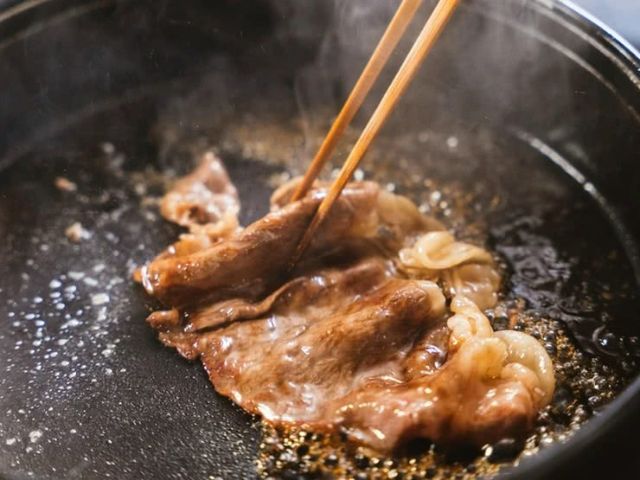
The [(Dinner) Full Course of Kitsune] (15,400 JPY) includes Yamato beef sukiyaki and other dishes made in a variety of different styles with Nara ingredients like maitake (hen-of-the-woods mushroom) soup and persimmon mixed with soft tofu.
Even among Japanese black wagyu, Yamato beef is a rare delicacy with limited availability. It is perfectly marbled with just the right balance of lean meat and fat, melting the moment it enters the mouth and unleashing a sumptuous sweetness.
Hojibancha tea is served at the end of the course, made by roasting tea leaves from Tsukigase in Nara Prefecture. It has a lovely aroma that makes for a perfect after-meal drink.
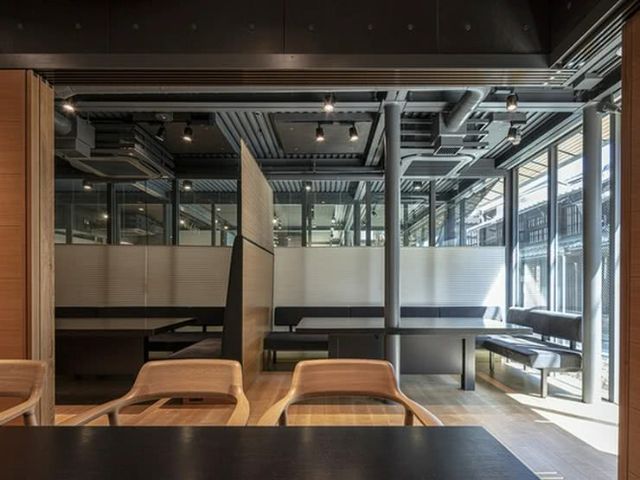
Nara is the ancient capital of Japan and is full of World Heritage Sites and other cultural properties, including Horyu-ji Temple, said to be the world's oldest existing wooden building. When in Nara, be sure to visit [Kitsune] after touring the sites to savor the flavors nurtured by Nara's nature.
Kitsune
Closed: Wednesday
Average price: [Dinner] 10,000 JPY / [Lunch] 4,000 JPY
Access: 5-minutes walk from Exit 1 of Kintetsu Nara Station on the Kintetsu Nara Line / Past Higashimuki Shopping Street, it's one street back from Sarusawa Pond
Address: Shika Saru Kitsune Building, 22, Ganriin-Cho, Nara-Shi, Nara Map
More Details Reservation
Disclaimer: All information is accurate at time of publication.
Thank you for reading our article.
Our goal is to take your culinary journey to the next level by helping you find the best restaurant. With SAVOR JAPAN, you can search and make reservations for
the Sukiyaki restaurants found in and around Tokyo and Nara that fill your needs.
Discover more Sukiyaki restaurants by area
- Tokyo Area
- Near Tokyo
- Kyoto and Osaka Area
- Hokkaido Area
- Northern Honshu (Tohoku)
- Central Honshu (Chubu)
- Western Honshu (Chugoku)
- Shikoku
- Kyushu
- Okinawa and Southeast Islands
Discover more restaurants to eat Japanese Cuisine by area
Keywords
Related Articles
New Articles
Categories
Cuisine
- Bars (21)
-
Japanese Cuisine (651)
- Kaiseki (42)
- Nabe (19)
- Okonomiyaki (18)
- Shabu Shabu (32)
- Soba (17)
- Sushi (129)
- Tempura (17)
- Teppanyaki (46)
- Shojin Ryori (2)
- Tonkatsu (10)
- Kushiyaki (10)
- Yakitori (41)
- Sukiyaki (33)
- Japanese Cuisine (336)
- Oyster (2)
- Sashimi/ Seafood (17)
- Unagi (eel) (30)
- Motsu Nabe (offal hotpot) (6)
- Mizutaki (chicken hot pot) (3)
- Oden (4)
- Kaisendon (seafood bowl) (7)
- Udon (2)
- Taverns(Izakaya) Cuisine (117)
- Western Cuisine (39)
- Italian/French Cuisine (91)
- Yakiniku/Steak (217)
- Chinese Cuisine (21)
- Ramen (Noodles) Cuisine (21)
- Cafe/Sweets (54)
- Other Asian Cuisine (5)
- Global/International Cuisine (7)
- Alcohol (43)
- Other (10)
Area
- Shikoku (10)
- Kyoto and Osaka (343)
-
Tokyo (435)
- Tokyo (266)
- Ginza (39)
- Roppongi (21)
- Shibuya (22)
- Shinjuku (41)
- Asakusa (19)
- Ebisu (10)
- Tsukiji (10)
- Tokyo Landmarks (3)
- Ueno (21)
- Akihabara (9)
- Ikebukuro (11)
- Jiyugaoka, Denenchofu, Nakameguro (9)
- Shimokitazawa (4)
- Kichijoji (3)
- Tachikawa (1)
- Omotesando, Harajuku, Aoyama (17)
- Akabane (1)
- Kagurazaka (4)
- Akasaka (8)
- Odaiba (1)
- Tsukishima, Harumi, Toyosu (3)
- Near Tokyo (97)
- Okinawa and Southeast Islands (58)
- Hokkaido (120)
- Northern Honshu (Tohoku) (31)
- Central Honshu (Chubu) (141)
- Western Honshu (Chugoku) (32)
- Kyushu (92)
Archives
- July 2025(5)
- June 2025(18)
- May 2025(34)
- April 2025(43)
- March 2025(30)
- February 2025(36)
- January 2025(26)
- December 2024(69)
- November 2024(31)
- October 2024(15)
- September 2024(39)
- August 2024(65)
- July 2024(31)
- June 2024(54)
- May 2024(61)
- April 2024(28)
- March 2024(31)
- February 2024(42)
- January 2024(32)
- December 2023(20)
- November 2023(5)
- October 2023(11)
- September 2023(7)
- August 2023(18)
- July 2023(8)
- June 2023(8)
- May 2023(18)
- April 2023(15)
- March 2023(1)
- January 2023(1)
- April 2022(2)
- March 2022(2)
- February 2022(1)
- January 2022(1)
- July 2021(1)
- March 2021(1)
- February 2021(1)
- December 2020(1)
- October 2020(1)
- September 2020(2)
- August 2020(10)
- July 2020(6)
- June 2020(9)
- May 2020(11)
- April 2020(8)
- March 2020(8)
- February 2020(13)
- January 2020(9)
- December 2019(24)
- November 2019(8)
- August 2019(14)
- July 2019(15)
- June 2019(18)
- May 2019(17)
- April 2019(16)
- March 2019(22)
- February 2019(22)
- January 2019(26)
- December 2018(34)
- November 2018(40)
- October 2018(32)
- September 2018(11)
- August 2018(8)
- July 2018(6)
- June 2018(9)
- May 2018(10)
- April 2018(21)
- March 2018(74)
- February 2018(39)
- January 2018(26)
- December 2017(60)
Keywords
- Omakase
- Accessible
- Affordable
- All-You-Can-Eat
- Amazing Scenery
- anime
- Art
- Autumn
- Awards
- Beer Gardens
- Breakfast
- Chef Recommendations
- Cherry Blossoms
- Chinese
- Close To Station
- Condiments
- Counter
- Coupon
- Crab
- Culture
- Dassai
- Dates
- delivery
- Early Summer
- Editor's Recommendation
- English Available
- Event
- Expo
- Fall Leaves
- Family-Friendly
- Famous Restaurant
- Famous Tourist Spot
- Fast Food
- festival
- fireworks
- Flower Farm
- Free Wi-Fi
- French
- Great Location
- Guide
- Hibachi
- hotpot
- How To
- hydrangea
- Hygiene
- Illumination
- Italian
- Izakaya
- Japanese
- Japanese alcohol
- jingisukan
- Kaiseki
- Kappo
- Kushiage
- Kushikatsu
- Kyoto
- Late-Night
- Lunch
- Manners
- matsusakagyu
- Michelin
- mizutaki
- Model Course
- monjayaki
- motsunabe
- Mt.Fuji
- Multilingual Menus
- Nabe
- Narita Airport
- New Year
- Ninja
- Noodle
- Oden
- Okonomiyaki
- omotenashi
- Onsen
- Osaka
- Osaka Station
- Photogenic Site
- pizza
- PR
- Private Room
- Ramen
- ranking
- Recipe
- Regional Cuisine
- Resort
- Rice Bowl Dish (Donburi)
- sacred places
- Sake
- Sakura
- Sashimi
- sea urchin
- Setouchi Area
- Shabu Shabu
- sightseeing
- Signature Dish
- Soba
- Solo Diners Welcomed
- Spicy Food
- Spring
- Steak
- Summer
- Sunflower
- Sushi
- Takashimaya
- takeout
- Teppanyaki
- Terrace Seating
- Tokyo
- Tokyo Skytree
- Tokyo Tower
- unagi
- UNESCO
- Vegan
- Vegetarian
- Wagyu
- What Popular Gourmet Sites Recommend
- Whisky
- Wine Bar
- Winter
- Wisteria
- Workshop
- World Heritage Site
- Yakiniku
- Yoshoku
- Yuba
- Zen
Discover Restaurants By Area
-

Tokyo Area
Japan's largest city, Tokyo, is the center of culinary culture in Japan. Countless Tokyo restaurants serve every kind of food imaginable and the Toyosu fish market keeps restaurants stocked with the nation's finest fish.
-

Near Tokyo
Coastal areas, mountains and valleys surrounding Tokyo are bursting with tourist destinations, such as hot springs and ski slopes, where many unique foods are only available locally.
-

Kyoto and Osaka Area
The cities of Kyoto and Osaka, together with their surrounding areas, have greatly influenced Japan's culinary culture since the 7th Century. The region is renowned for its entertainment, Kobe beef, and wide-ranging traditional dishes.
-

Hokkaido Area
The island of Hokkaido is home to wide-ranging produce of the finest quality, such as rice, meat, vegetables, fish and fruit. Popular dishes from Hokkaido include robatayaki (food slowly roasted on skewers) and Sapporo miso ramen.
-

Northern Honshu (Tohoku)
The northern end of Japan's main island, Honshu, is renowned for its seasonal fruit and vegetables, nation-leading harvest of fish (especially tuna from Ohma), and delicious beef from Yonezawa, Sendai and Yamagata.
-

Central Honshu (Chubu)
Chubu is in the center of Japan's main island, Honshu, and its culinary culture reflects its position between Japan's western and eastern halves. Delicious Hida beef, world-famous Mount Fuji and many acclaimed sake breweries are in Chubu.
-

Western Honshu (Chugoku)
Chugoku, on the southwest of Japan's main island, is rich with diverse produce. Many of its products are praised as Japan's best, including Matsuba crabs from Tottori and oysters from Hiroshima. Its pears and muscats are also top grade.
-

Shikoku
The mild climate of Shikoku is ideal for growing citrus fruit such as sudachi. Shikoku is also famous for Sanuki udon noodles, huge yields of tiger prawn from Ehime Prefecture and the best torafugu (tiger globefish) in the country.
-

Kyushu
Western culture was first introduced to Japan through Kyushu, Japan's third largest island, where the influence of Portuguese and other western cuisine influenced the creation of a colorful culinary tradition.
-

Okinawa and Southeast Islands
Okinawa, Japan’s southernmost prefecture, is a treasure trove of distinctive dishes and drinks that have become popular throughout Japan, including Okinawa soba, unique sushi toppings and Awamori distilled liquor.
